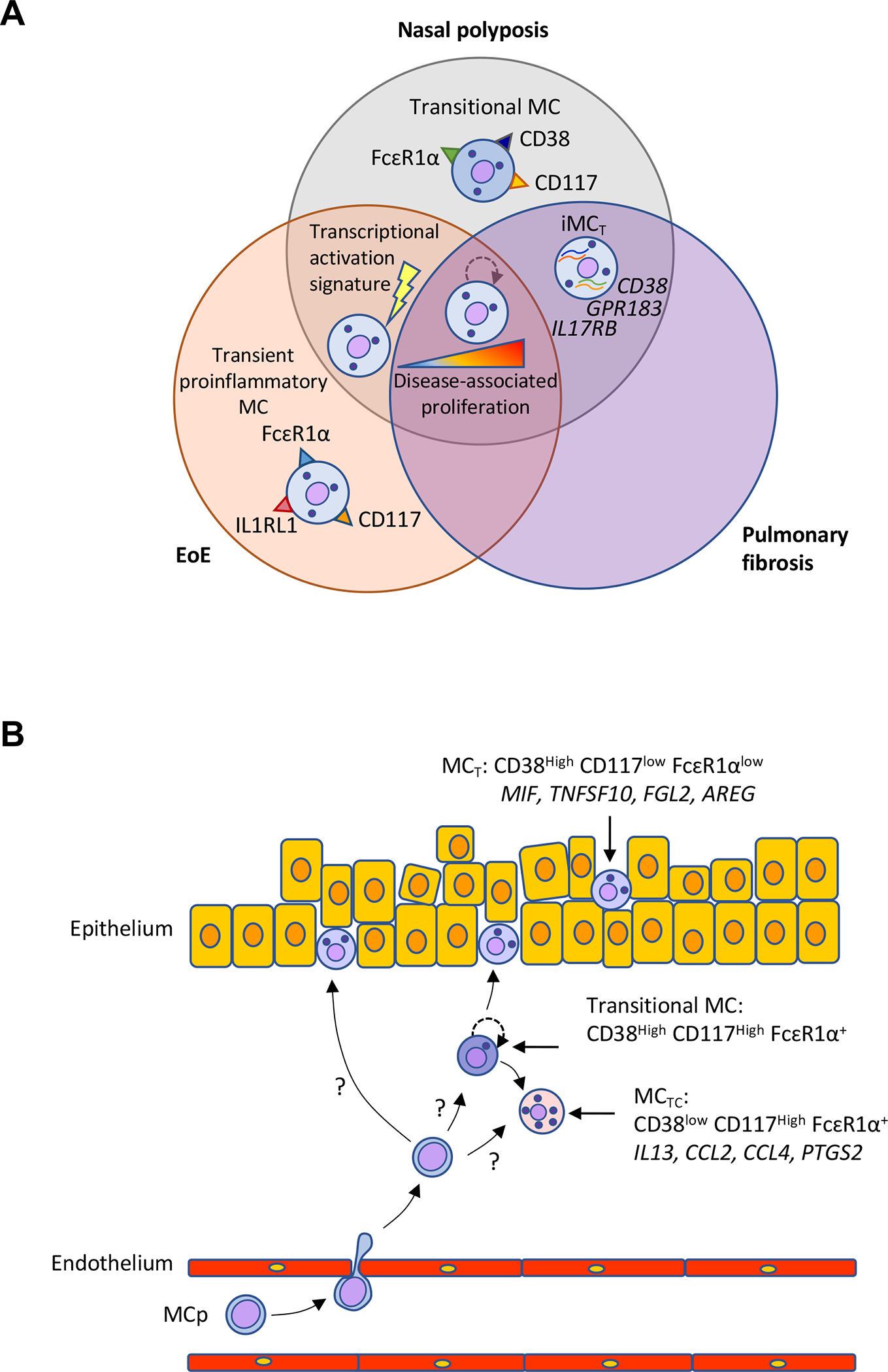Fig. 2.

MCs exhibit specific features across tissue and diseases. (A) Characterization of scRNA-seq defined features identified in MCs across nasal polyposis, EoE, and pulmonary fibrosis. MC expansion is a common feature across all three diseases and is associated with disease severity. In both nasal polyposis and EoE, a MC activation-associated gene signature is enriched in MCs, while in nasal polyposis and pulmonary fibrosis, intraepithelial MCs expressing distinct cassette of genes including CD38, IL17RB, and GPR183 appear during inflammation (iMCTs). (B) Schematic indicating a recently defined model for development of phenotypically heterogeneous MCs in nasal polyposis (38). Three phenotype of MCs, MCTC, MCT, and transitional MCs can be identified through differential expression of CD117, FcɛR1α, and CD38 on their surface. MCTC and MCTs may arise directly from MC progenitors recruited to the tissue or from transitional MCs with elevated proliferation potential that develop from MC progenitors and expand within tissue. Each phenotype has the potential to contribute to disease through expression of pro-inflammatory mediators.
